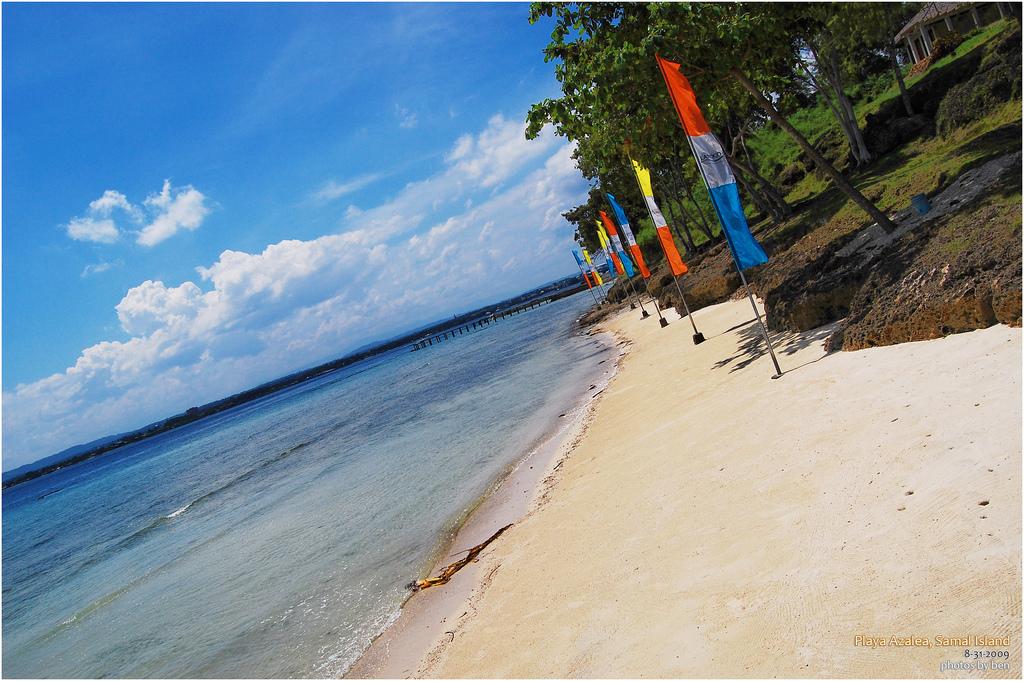
The Island Garden City of Samal was created with the merger of the municipalities of Babak, Samal, and Kaputian by virtue of Republic Act. No. 8471 which was approved by former President Fidel V. Ramos on January 30, 1998 and later ratified by its residents on March 7 of the same year.
Politically , Island Garden City of Samal is a component City of Davao del Norte Province. As a result of the merger, the three municipalities involved in the creation ceased to exist, thus the newly created city acquired all the physical characteristics of the former municipalities which now become its three political districts. Babak as District l , Samal as District ll where the center of the city government is located , and Kaputian as District lll.
As an Island
As an island, it has several commercial resorts and private beaches spread along the 118-kilometer stretch white sand. Aside from these, one of the attractions is the Sanipaan Shoal, aptly called Vanishing Island because half of the 80-hectare shoal emerges as a sand bar during low tide but vanishes during high tide creating the illusion of vacationing in the open seas.
Another most-visited destination is the 224-hectare mariculture park which is a showcase of new fisheries development strategy that puts premium on transforming coastal communities into centers of growth and prosperity.

For scuba-diving buffs, Talikud and Ligid Islands are excellent dive spots where a dive into the depths will reveal colorful underwater vistas with jaw-dropping tropical marine life. A 150-hectare Coral Garden & Marine Reservation Park located in Talikud and the Aundanao Fish Sanctuary offer another treat to diving and snorkeling enthusiasts.
As a Garden
Aside from its underwater garden, Samal also has a botanical garden and nature’s park. Located in barangay Bandera, this 11.5 hectare government-owned park with over a hundred species of trees and flower gardens is envisioned to be the sanctuary of nature lovers.
Samal is also home to Mindanao’s First Magrovetum that serves as a laboratory for dendrological, educational, eco-tourism and phonological and other studies on the mangrove ecosystem. Also, an indication of Samal’s sound ecological system is the bat sanctuary (cave) that hosts gazillions of fruit bats.
Adventurers can also commune with nature by climbing Mount Puting Bato, rapel at Bito Depression, mountain-bike and camp out in the midst of lush vegetation or maybe beside the rustling waters of Hagimit Falls or Tagbaobo Falls. For the spelunkers, exploring Balete, Magongawong, Tamburong, and Baga caves, among about 70 caves in the island will surely offer thrill and excitement.
Festivities in the Island abound. Each of the three districts celebrate their own festival - - Kabasan for Babak, Hugyaw Madyaw for Samal, and White Nights for Kaputian. As a whole, the city celebrates its Founding Anniversary on the 7th of March and the a-la-mardi gras Caracoles Festival on the last Saturday of April. Street-dancing, fluvial parade, sand sculpture, banca race, street party, are just a few of the many exhilarating and colorful activities during these festivals.

Sunrise over Samal Island
As a City
As a city, Samal is known to be an urbanizing center within a rural setting. Putting in place urban amenities with great approbation for its natural endowments, it aims to be the information technology hub of Southern Philippines. With its strategic location, typhoon-free climate, stable peace and order, supportive local government unit and community, Samal is an ideal location for investments.

Priority areas for investments are eco-tourism site development, cultural village and ancestral home development, new and state-of-the-art common carrier (land, water, & air), port infrastructure, cold storage facilities, warehouse, and ice plants.
Come to the Island Garden City of Samal! The Island. . . The Garden. . . The City!










